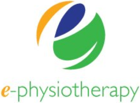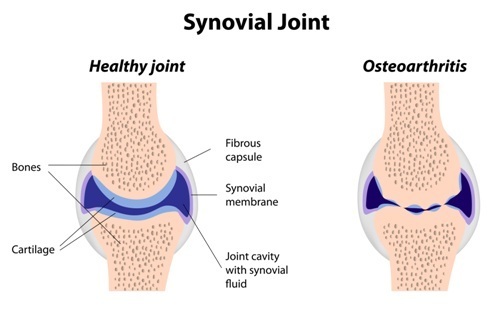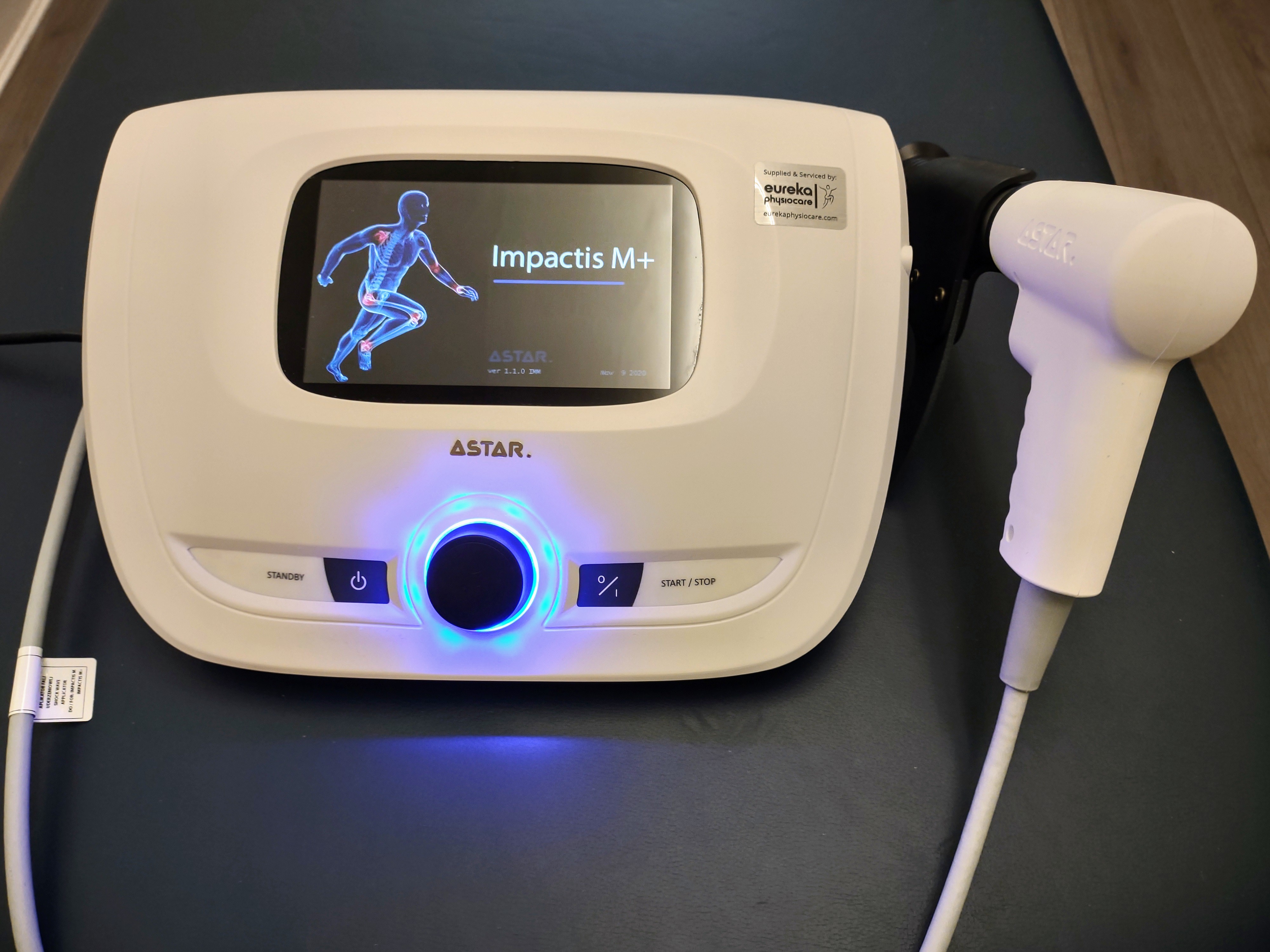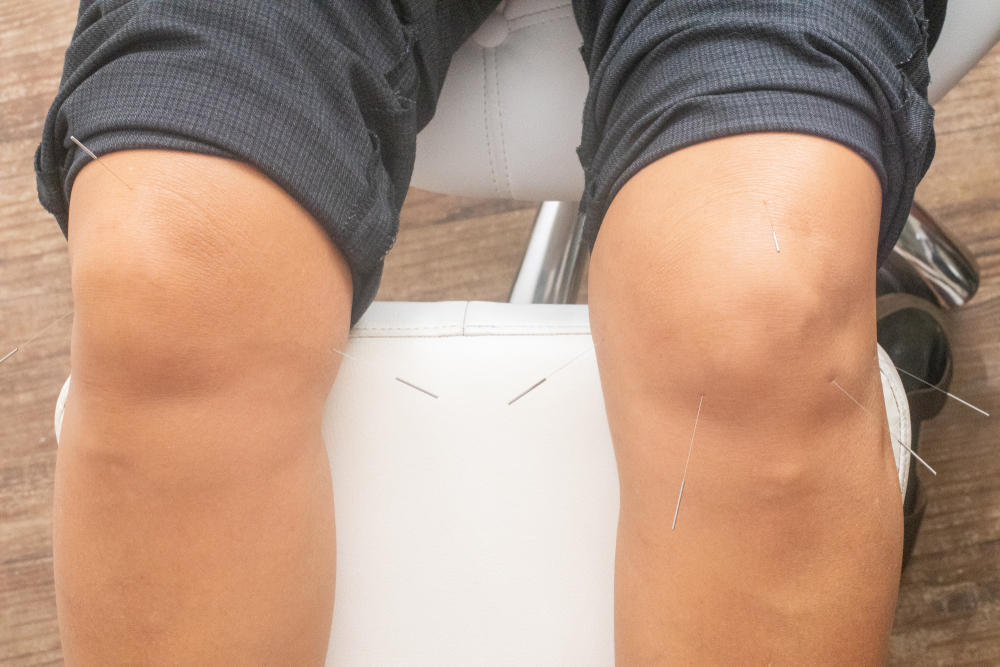In addition to medication, the main treatments for osteoarthritic knees are weight loss, general exercise and strengthening the muscles around the knee. Joint surgery is always the last option, once you are no longer able to continue with your normal activities of daily living including walking.
Other commonly used strategies include pacing your activities to avoid too much or too little activity. Too much activity can inflame your knee joint, increasing pain and swelling. Too little activity can cause more joint stiffness and strength loss which in turn causes more pain. Using supportive, cushioning and comfortable footwear helps to reduce irritation in the knee joint while walking.
Proprioception (one’s ability to feel what position your joint is in space and to control this) is impaired in people with osteoarthritic knees. The evidence that working on proprioception for arthritic knees is not strong but it does make sense to improve this as it may also help with the prevention of falls, which would exacerbate pain if you fall on an arthritic knee.
Related to proprioception, there is now evidence that hip abductor strengthening is effective for osteoarthritic knees for reducing pain and improving function. Hip abductor muscles help you to balance and reduce the amount of knee shearing forces, which may irritate an arthritic knee. If the hip abductor muscles are weak, the knee moves toward the centre line of your body when weight bearing/walking. This causes stress on the inside of the knee, which is usually where the most wearing occurs in an osteoarthritic knee, and more pain. If you can improve the strength and control of the hip abductor muscles of the hip, this helps to reduce knee pain.
Exercise in water can be helpful for very painful arthritic knees, especially in overweight individuals. The buoyancy provided by the water reduces the load on the knee joint allowing for more vigorous exercise than on land with less pain. The resistance of the water provides a versatile way of strengthening the muscles of the lower limb. The heat of the water in a hydrotherapy pool also helps to relax muscles and reduce pain.
Manual therapy is commonly used for osteoarthritic knees but the evidence is inconclusive as to its effectiveness. There are a number of different manual therapies that can be used including myofascial release, muscle energy and hold relax techniques, SNAGS of the Mulligan school, or passive joint mobilizations as taught by Maitland. Sometimes the tibio-fibular joint can become stiff in arthritic knees and manual therapy to this joint can increase joint range and reduce pain.
Acupuncture/dry needling may have a short term effect on pain with osteoarthritic knees. It also improves physical function in both the short and long term. Evidence from randomized controlled trials and systematic reviews is not yet strong, but is showing evidence that acupuncture and dry needling are effective in treating the symptoms of osteoarthritic knees.
Transcutaneous electrical nerve stimulation (TENS) can be used to control pain and reduce reliance on pain medication for osteoarthritis. The evidence for TENS effectiveness is inconclusive due to poor quality studies but patients do report significant reduction in pain levels using a TENS machine. TENS machines are inexpensive and can provide relief while using them and for several hours after use.
What type of physiotherapy intervention is used depends on the patient’s goals and can be discussed with your physiotherapist. It must always involve exercise, strengthening and weight loss if you are overweight. Additional manual therapies and modalities can be used to control pain and improve movement.
References
Hip abductor strength–based exercise therapy in treating women with moderate-to-severe knee osteoarthritis: a randomized controlled trial
Jianxiong Wang, Yujie Xie, Li Wang, Lei Lei, Peng Liao, ShiQi Wang, YaQian Gao, Yu Chen, Fangyuan Xu and Chi Zhang. Clinical Rehabiltation, 2019 Sep 1-10.
The effects of acupuncture on chronic knee pain due to osteoarthritis: a meta-analysis. Lin S, Huang K, Zhu G, Huang A, Qin A, Fan S. Journal of Bone and Joint Surgery – American Volume 2016 Sep 21;98(18): 1578-1585
Effects of aquatic exercise on muscle strength and functional performance of individuals with osteoarthritis: a systematic review. Mattos, Fernanda de; Leite, Neiva; Pitta, Arthur; Bento, Paulo Cesar Barauce. Revista Brasileira de Reumatologia December 2016 56(6):530-542.
NICE Guidelines
file:///C:/Users/enemy/Downloads/osteoarthritis-management-of-osteoarthritis.pdf




